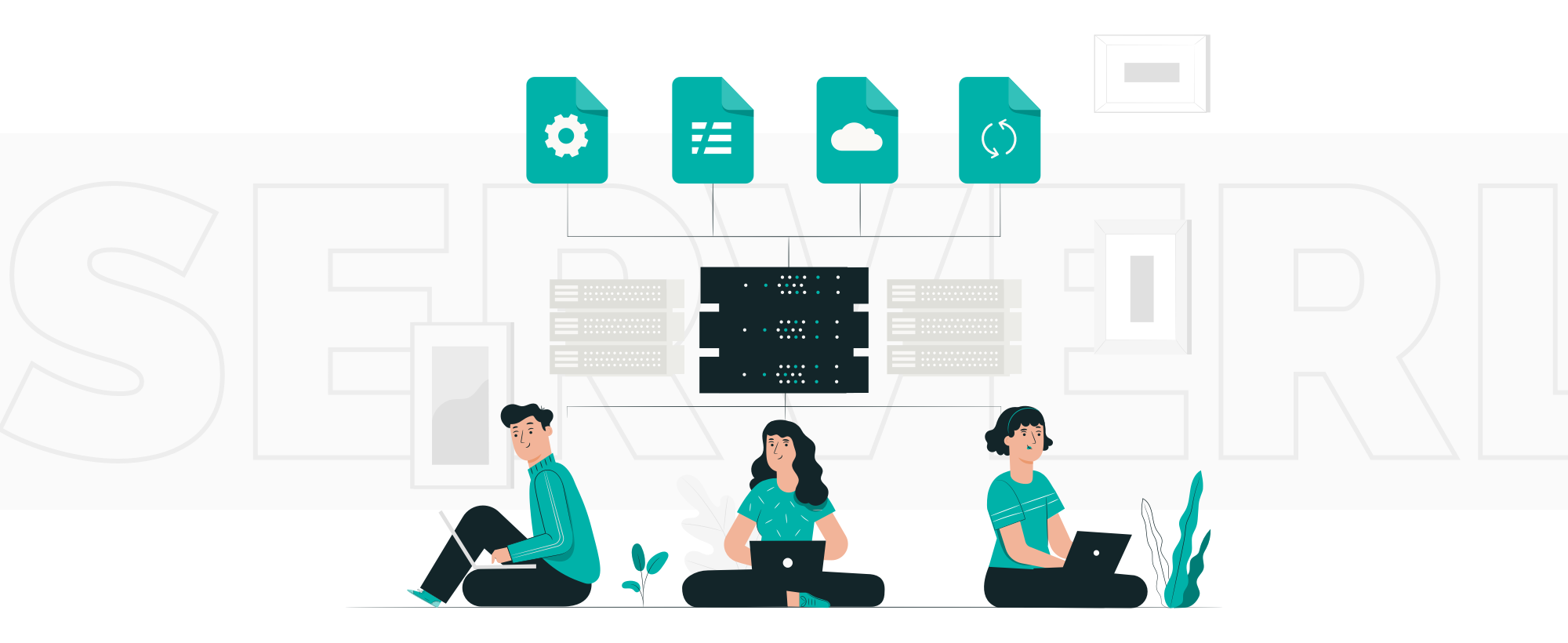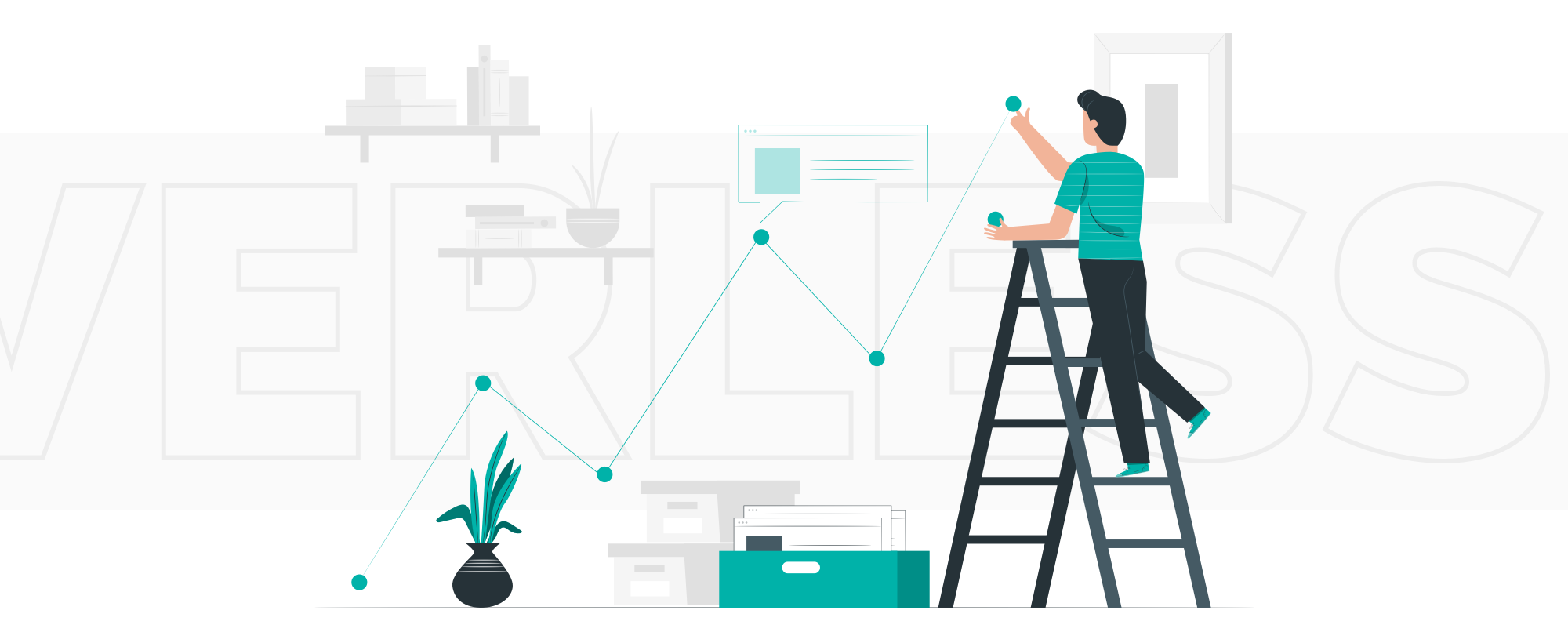How to Build Apps with Serverless Architecture

Web Expert at Techmagic, full-stack developer, coach and speaker. Passionate about JavaScript, Cloud Computing and Serverless.

A serverless application model is becoming a leading development architecture. Read our ultimate guide on building serverless apps to upgrade your business.
When a team considers building a serverless app, they have to re-adapt to the specific of Сloud architecture. In this guide, we’ll talk about the stages of building frontend and backend in the serverless application model, discuss its opportunities and limitations, and reference best examples
What Is Serverless Architecture?
Serverless is an approach to assembling and publishing applications without dealing with the basic infrastructure. The server space is taken care of by the outsider partner, not by the company itself. With this approach, organizations have one less issue to stress over: now that backend is outsourced, frontend turns into the main concern.
BaaS — Backend As A Service
The serverless design depends on the idea of acquiring a backend. You pay an outside vendor for dealing with the inner logic of the application — information storage, devices, security, and backend. As the platform generates all the backend automatically, you save a lot of time on development and testing.
Most providers utilize a flexible per-use model: groups pay not for a specific timeframe, but for utilized extra room and processing power. If you need more server space, the platform will automatically modify your plan.
FaaS — Functions As A Service
In serverless, FaaS is the application’s frontend. The functionality is broken down into many functions that run independently.
A function is set into action once a trigger action arrives from a user. An event triggers the response from the application. As a result, the function starts running. A function is limited in runtime and size by the Cloud service providers. Once the event that triggered the function is canceled, functions stop running. The application is very selective about its memory usage resulting in lowered computing expenses.

Can Serverless Architecture be Used for Building Mobile Apps?
Most Cloud platforms have special environments for serverless mobile development. AWS, for instance, offers a Cloud Mobile Hub — a platform that connects mobile functionality and interfaces to AWS serverless infrastructure.
The fundamental distinction between using in-house infrastructure and serverless design is that the backend migrates to Cloud. Developers need to build the frontend functions that react to the client-made triggers. Versatile applications on serverless engineering are quick, dependable, and lightweight.
Advantages of Serverless Architecture for App Development
Companies that earlier preferred the monolithic approach, now switch to serverless app development and decentralize their functionality. The reason for such popularity is its efficiency. For relatively low subscription costs, developers get:
- Simple structure. Serverless has templates for frontend function development — you only need to paste the code into predefined frameworks. On top of that, you don’t have to set up the app’s business logic and write backend.
- Lower costs. Serverless platforms allow paying only for used storage and computing resources. In AWS, the cost of 1 million processed requests is $0.20. Google Cloud offers the processing of the first 2 million requests for free, while the standard price is $0.40 for 2 million requests.
- Scalability. Flexibility is a defining feature of serverless. To make a change in the app, developers only need to edit a single function. This isolation makes development and updates easier to handle.
- Focus on functionality. As developers no longer need to worry about hardware, data processing, and internal business logic, they can focus on the main functionality of the app. It results in higher product quality and responsiveness.
How Can Serverless Application Model Work?
A serverless application is built as a combination of functions that work simultaneously. It can also include databases, APIs, and event source mappings.
- Template specification. Specifications describe the syntax of your application, its events, permissions, and settings. You can use a ready template and customize it for your app’s purpose and functionality — as in SAM by AWS and Google Cloud.
- The command line. All tools offer a custom command line that’s governed by a SAM. Commands in the CLI allow modifying the template files, call functions, debug code, create and sort packages, etc.
Choose a Cloud provider
In serverless development, the success of your project depends on the right choice of a Cloud provider. Currently, there are several leaders in the market:
- Amazon Web Services — the leading Cloud infrastructure with elaborate serverless development tools. AWS Lambda offers native support of Node.js, Java, Python, Ruby, Golang, C#;
- Google app development platform is known for its startup-supportive pricing policies and reduced computing costs. Google Functions support Java, Python, Node.js, Go;
- IBM — a top destination for enterprises. C and C++ are the main languages.
Serverless Deployment
Serverless architecture development allows deploying the entire project, by functions, and packages. Also, all platforms use different tools and allow deploying different sizes of applications. Take a look at the official documentation of Cloud providers to see if offered strategies work for your project: Lambda deployment tutorial, Google Functions app deployment guide, IBM’s official tutorial to deploying serverless functions.
Infrastructural limits
Different providers have different maximum runtime, storage space, computing speed, and processing power.
- AWS Lambda’s documentation describes maximum storage space limits, specifics of memory allocation, runtime restrictions, and CPU availability.
- Google Functions doesn’t let increasing the maximal number of servers, revisions, container instances. There are additional limitations, like the number of allowed processed SSL certificates, which is no more than 50.
- IBM also puts restrictions on used memory, CPU, the maximal number of processed requests, etc. It’s important to follow the news on each vendor. IBM, for instance, announced the increase of available memory space back in 2019.
Scalability
Serverless architecture is highly scalable by its nature; however, each provider has different strategies to enable software growth.
It’s common among Cloud vendors to offer automated scaling of serverless functions. Here’s Lambda’s guide to algorithm-based function scaling based on your project’s demands.
Google offers a bunch of services for application scaling. If you’d like to have multiple scaling options in your serverless infrastructure, Google is likely to appeal to you with its rich ecosystem.
IBM, just like Google and AWS, offers automated scaling, but the approach is slightly different. Find all IBM infrastructure limitations for auto-scaling algorithms in this guide.
Development
To develop a serverless architecture, you need to define the events and triggers and understand how the user will interact with the application. Developers have to foresee various events and come up with appropriate responses.
The process of building the application isn’t different from the best frontend development practices. The main problem that developers and the QA team face is the inability to run the features locally. Cloud providers allow running only one function at a time on the local storage. The solution is to download an extra environment that will bypass this restriction or contact providers who deliver AWS serverless services.
During the development process, you should also integrate some serverless security tools, and it'll give you much more visibility and help you to predict any technical issues with your apps.

Examples of Serverless Applications
Below is the list of serverless app development examples of companies who chose FaaS for their development.
Royal Dutch Shell
Shell already had a mobile application but it couldn’t integrate with complex analytics, didn’t accommodate the necessary amount of users, and handled data poorly. Shell wanted to focus on security, and this required a total app redesign.
The solution was to switch to Amazon Cloud infrastructure for serverless app development with Node.js. Now, the company uses more than 100 Amazon instances to accommodate its complex functionality and third-party components for security.
UPS
UPS picked a serverless design and Cloud-based infrastructure for their conversational bot. The organization needed an AI partner that would deal with customers' requests, consult, and keep the team updated. To speed up the process, the organization chose Microsoft Azure and its foundation as assistance.
Azure Cloud and serverless development provided UPS with a ready-to-use infrastructure. They were able to outsource their backend to Microsoft and only worry about implementing intuitive and reliable client-side functionality.
T-Mobile
The communication company decided to shift to AWS Lambda for their web and mobile development. Their platforms process a lot of sensitive data and have to be highly scalable.
The transition to serverless application development wasn’t easy. Apart from coding, T-Mobile had to take responsibility for some non-coding tasks like data migration, documentation, API integration, and others.
Serverless App Development With TechMagic
Transferring to serverless is an answer for established organizations and new businesses. It's a method to lessen costs, improve the quality, shorten time to market, and spotlight advancement. You get access to dozens of development tools, API integration automation plugins, and on-demand scaling. If you don’t have the right team to go serverless, find company that provides AWS serverless services.
TechMagic is an IT expert with vast experience in building serverless architecture apps. If you are planning on building a serverless mobile app, consult our experts — we are happy to share our expertise and skills.



 Software Development
Software Development
 Security Services
Security Services
 Cloud Services
Cloud Services
 Other Services
Other Services
















 TechMagic Academy
TechMagic Academy
 linkedin
linkedin
 facebook
facebook
 twitter
twitter






















